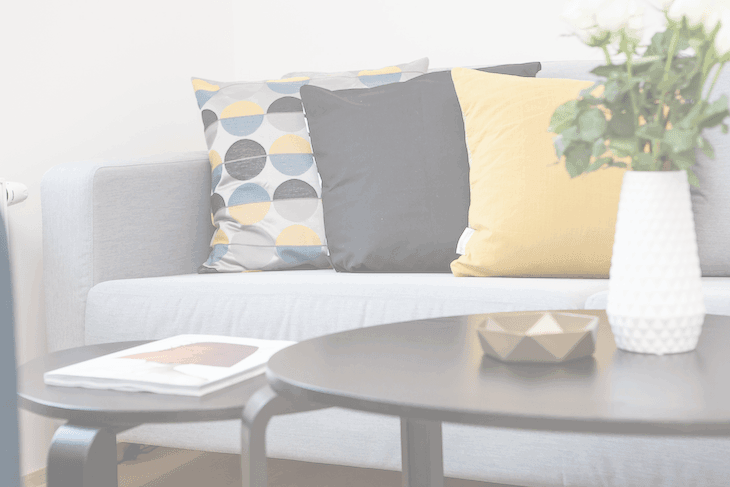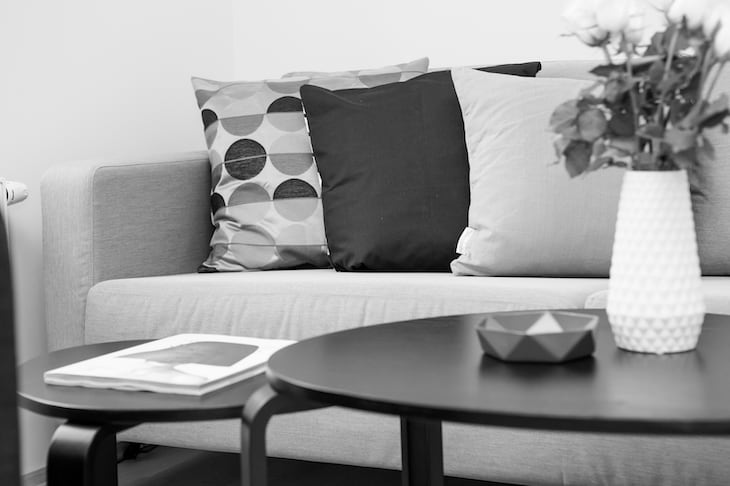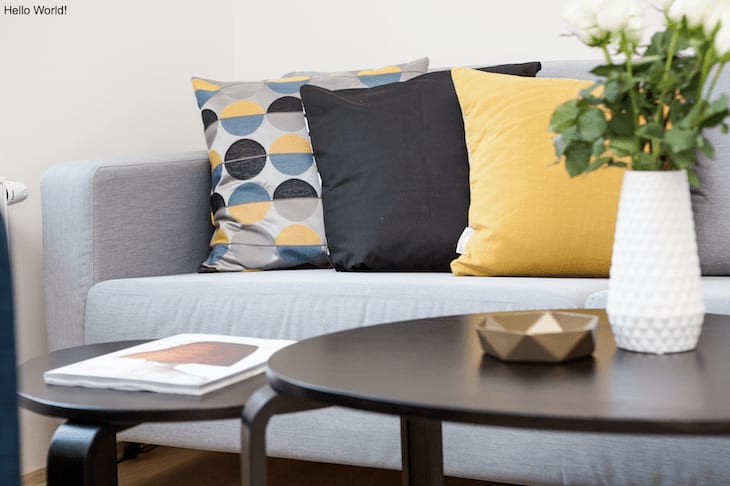Written by Godwin Ekuma✏️
If your web application supports user-uploaded images, you probably need to transform them to fit the design specification of your app.
JavaScript Image Manipulation Program (Jimp) allows you to easily manipulate and transform your images into any required format, style, or dimension. It also optimizes images for minimal file size, ensures high visual quality for an improved user experience, and reduces bandwidth.
With Jimp, you can resize and crop images, convert them to the image format that fits your needs, and apply filters and effects. In this tutorial, we’ll go over how the library works and describe some common use cases for Jimp image manipulation.
Installation
npm install --save jimp
Jimp can only be used on a limited range of image formats. Before you start working with the library, you’ll want to make sure it supports the formats you plan to include in your app.
Supported types include:
@jimp/jpeg@jimp/png@jimp/bmp@jimp/tiff@jimp/gif
Basic use
Jimp offers both callback- and Promise-based APIs for manipulating images. For the purpose of this post, we’ll use Jimp’s Promise API.
The static Jimp.read method accepts an image as an input. The input could be the location of an image file in the file system, a web address (URL), dimension (width and height), Jimp instance, or buffer. Then, it returns a Promise.
Jimp.read('http://www.example.com/path/to/lenna.jpg')
.then(image => {
// Do stuff with the image.
})
.catch(err => {
// Handle an exception.
});
Resizing and cropping images
Resizing
Jimp’s resize() method alters the height and/or width of an image via a two-pass bilinear algorithm.
Syntax:
resize( w, h[, mode] )
Example:
const Jimp = require('jimp');
async function resize() {
// Read the image.
const image = await Jimp.read('https://images.pexels.com/photos/298842/pexels-photo-298842.jpeg');
// Resize the image to width 150 and heigth 150.
await image.resize(150, 150);
// Save and overwrite the image
await image.writeAsync(`test/${Date.now()}_150x150.png`);
}
resize();
Original image:
Resized image:
Jimp.AUTO can be passed as the value for the height or width and the image will be resized accordingly while maintaining aspect ratio. You cannot pass Jimp.AUTO as the value for both height and width.
If no resizing algorithm is passed, Jimp uses Jimp.RESIZE_BILINEAR as the default resizing algorithm. Other resizing algorithms that Jimp allows include:
Jimp.RESIZE_NEAREST_NEIGHBOR;Jimp.RESIZE_BILINEAR;Jimp.RESIZE_BICUBIC;Jimp.RESIZE_HERMITE;Jimp.RESIZE_BEZIER;
Crop
The crop() function is used to crop an image to specified x and y coordinates and dimensions.
Syntax:
crop( x, y, w, h)
Example:
async function crop() {
// Read the image.
const image = await Jimp.read('https://images.pexels.com/photos/298842/pexels-photo-298842.jpeg');
await image.crop(500, 500, 150, 150);
// Save and overwrite the image
await image.writeAsync(`test/${Date.now()}_crop_150x150.png`);
}
crop()
Cropped image:
Modifying image shape and style
Rotate
The rotate() method rotates an image clockwise by a given number of degrees. The dimensions of the image remain the same.
Syntax:
rotate( deg[, mode] );
Example:
async function rotate() {
// Read the image.
const image = await Jimp.read('https://images.pexels.com/photos/298842/pexels-photo-298842.jpeg');
await image.rotate(45);
// Save and overwrite the image
await image.writeAsync(`test/${Date.now()}_rotate_150x150.png`);
}
rotate()
Output:
Flip
The flip() method flips an image either horizontally or vertically. The default setting is to flip the image horizontally.
Syntax:
image.flip( horz, vert )
Example:
async function flip() {
// Read the image.
const image = await Jimp.read('https://images.pexels.com/photos/298842/pexels-photo-298842.jpeg');
await image.flip(true, false);
// Save and overwrite the image
await image.writeAsync(`test/${Date.now()}_flip_150x150.png`);
console.log("flipped")
}
flip()
Output:
Opacity
The opacity() method multiplies the opacity of each pixel by a factor within the range of 0 and 1.
Syntax:
opacity( f );
Example:
async function opacity() {
// Read the image.
const image = await Jimp.read('https://images.pexels.com/photos/298842/pexels-photo-298842.jpeg');
await image.opacity(.5);
// Save and overwrite the image
await image.writeAsync(`test/${Date.now()}_opacity_150x150.png`);
}
Applying image effects and filters
Grayscale
The greyscale modifier desaturates or removes color from an image and turns it to grayscale.
Syntax:
greyscale();
>
Example:
async function greyscale() {
// Read the image.
const image = await Jimp.read('https://images.pexels.com/photos/298842/pexels-photo-298842.jpeg');
await image.greyscale();
// Save and overwrite the image
await image.writeAsync(`test/${Date.now()}_greyscale_150x150.png`);
}
greyscale()
Output:
Blur
The blur() method blurs an image by r pixels using a blur algorithm that produces an effect similar to a Gaussian blur, only much faster.
Syntax:
blur(r) // fast blur the image by r pixels
Example:
async function blur() {
// Read the image.
const image = await Jimp.read('https://images.pexels.com/photos/298842/pexels-photo-298842.jpeg');
await image.blur(20);
// Save and overwrite the image
await image.writeAsync(`test/${Date.now()}_blur_150x150.png`);
}
blur()
Output:
Image and text overlays
Image overlay
The composite() method overlays an image over another Jimp image at x, y.
Syntax:
composite( src, x, y, [{ mode, opacitySource, opacityDest }] );
Example:
async function waterMark(waterMarkImage) {
let watermark = await Jimp.read(waterMarkImage);
watermark = watermark.resize(300,300);
const image = await Jimp.read('https://images.pexels.com/photos/298842/pexels-photo-298842.jpeg');
watermark = await watermark
image.composite(watermark, 0, 0, {
mode: Jimp.BLEND_SOURCE_OVER,
opacityDest: 1,
opacitySource: 0.5
})
await image.writeAsync(`test/${Date.now()}_waterMark_150x150.png`);
}
waterMark('https://destatic.blob.core.windows.net/images/nodejs-logo.png');
Output:
Text overlay
You can write text on an image with the print() API. Jimp supports only the Bitmap font format (.fnt). Fonts in other formats must be converted to .fnt to be compatible with Jimp.
Example:
async function textOverlay() {
const font = await Jimp.loadFont(Jimp.FONT_SANS_32_BLACK);
const image = await Jimp.read(1000, 1000, 0x0000ffff);
image.print(font, 10, 10, 'Hello World!');
}
textOverlay();
Output:
Learn more about Jimp
We’ve only scratched the surface of use cases for Jimp. If you’re considering using Jimp as your primary image processor, check out the full documentation on the official GitHub and npm pages.
200's only ✅: Monitor failed and show GraphQL requests in production
While GraphQL has some features for debugging requests and responses, making sure GraphQL reliably serves resources to your production app is where things get tougher. If you’re interested in ensuring network requests to the backend or third party services are successful, try LogRocket.
LogRocket is like a DVR for web apps, recording literally everything that happens on your site. Instead of guessing why problems happen, you can aggregate and report on problematic GraphQL requests to quickly understand the root cause. In addition, you can track Apollo client state and inspect GraphQL queries' key-value pairs.
LogRocket instruments your app to record baseline performance timings such as page load time, time to first byte, slow network requests, and also logs Redux, NgRx, and Vuex actions/state. Start monitoring for free.
The post Image processing with Node and Jimp appeared first on LogRocket Blog.



















Top comments (0)